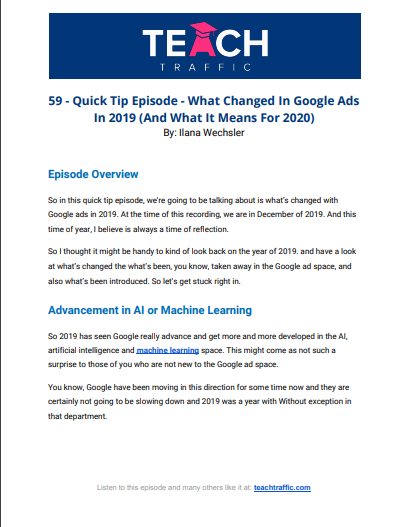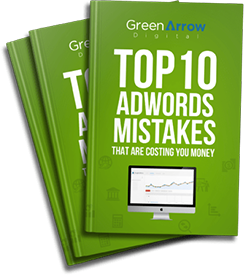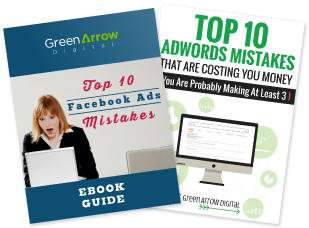In the podcast:
00:39 – Episode Overview
01:30 – Advancement in AI or Machine Learning
02:03 – Accelerated Ad Delivery
03:20 – Avg. Position
05:11 – Match Types
07:14 – Gallery Ads
07:40 – Pay For Conversions
09:06 – Combined Audiences
09:37 – Lead Ads
What Changed In Google Ads In 2019 in PDF

Episode Overview
Welcome back to this quick tip episode of Teach Traffic. These quick tip episodes are designed to be really short and straight to the point and cover lots of quick and actionable tips that you can apply to your own campaigns and your own business.
So in this quick tip episode, we’re going to be talking about is what’s changed with Google ads in 2019. At the time of this recording, we are in December of 2019. And this time of year, I believe is always a time of reflection.
So I thought it might be handy to kind of look back on the year of 2019. and have a look at what’s changed the what’s been, you know, taken away in the Google ad space, and also what’s been introduced. So let’s get stuck right in.
Advancement in AI or Machine Learning
So 2019 has seen Google really advance and get more and more developed in the AI, artificial intelligence and machine learning space. This might come as not such a surprise to those of you who are not new to the Google ad space.
You know, Google have been moving in this direction for some time now and they are certainly not going to be slowing down and 2019 was a year with Without exception in that department.
Accelerated Ad Delivery
So what have they taken away from advertisers in 2019. And they’ve taken away a number of things. So one of the things which we used to do a lot in our agency, but can’t now because Google has taken it away, is taken away the ability to do what’s called accelerated delivery.
So accelerated delivery was a way as an advertiser that you could say to Google, hey, Google, show my ad as frequently as easy as it is eligible. Therefore, accelerated delivery, rather than spacing out the impressions throughout the day as it normally would have.
And this was always one about, you know, historically, our little tips that we did for client accounts to for our, you know, really high performing keywords, put them on to accelerate a delivery and we used to get a bunch of extra leads and sales as a result of this way.
Now in 2019 we saw Google take this away. And if you didn’t sort of reflect this in your account, don’t worry, it was automatically defaulted back to the standard delivery mechanism. But if you’re wondering, you know, where is it and why can’t I do this anymore? Well, they’ve taken it away. So that’s a little disappointing. On on our side, for sure.
Avg. Position
Google also took away what’s called average position, which was one of the metrics that you could see what ad position your ad was, in. So average, but so sometimes, you would might have seen an average position of, let’s say, 2.3, if you looked in your ad account, which meant that, you know, most of the time your ad was in position to that some of the time your ad position was in position three hits 2.3, not exactly two and not exactly three.
So earlier this year, Google removed this metric. So if you had any automatic rules that were running that drew upon this particular metric and you know, rules were running as according to this, then you will need to change those automatic rules. But they replace this with a number of different metrics, mainly search impression share top and search impression share absolute top. And I guess sort of blurring the lines for us as advertisers to really get a sense of where our ad is.
So that they’ll tell us when our ad is in the absolute top position, which is in position one. And other than that, they’re probably not going to reveal a whole lot. So they’ll just tell us when it’s in the top stack.
And if it’s not there, then it’s in the bottom stack. But where exactly in those top, you know, for ad positions or two, three and four, I guess they are not clear about which is also quite disappointing. But I guess as I said, the big takeaway is if you have scripts that are running or automatic rules, leveraging this A trick you will need to change them because maybe you’re changing bids according to ad position, etc.
Alright, so that’s the second thing that they took away.
Match Types
And the third thing which is quite a big thing, which they changed, which was they changed how they define match types.
So most people are aware that when you bid on a keyword there are match types associated with that the exact match phrase match or modified broad, and they’ve really loosened their rules with these match types.
So historically, exact match. Let’s say we’re bidding on the term red shoes. Exact Match meant that your ad would only show for when somebody types in red shoes, but now exact match as people commonly say in the industry is now exact-ish match where it is your ad would show for red shoe, for example, or with red lady shoes, maybe or maybe not exactly that.
But they’ve definitely loosened the rules with exact match, and now across the board, so with phrase match and modified broad match, where it’s not as strict as it used to be. And so they’re allowing more what’s called close variants into the mix.
So it’s never really been more important for you as an advertiser to be analyzing and trolling through your search term reports to see is Google sneaking in some search terms that are just not that relevant when you would otherwise have thought, well, how could this be allowed because I’m using this specific match type. Well, that’s how they have definitely loosened their their rules associated with it.
So be mindful to, you know, as you probably know, Google Ads is not sitting forget. And therefore, looking at these search term reports, is really, really important.
Gallery Ads
On the flip side, Google have introduced a lot of things. So they have introduced what’s called gallery ads. This is in the process of being rolled out. It’s hit some of our accounts and some of ours, it has not hit.
So these are big images associated with kind of like Google Shopping ads or that kind of stuff. So that is coming to all accounts.
Pay For Conversions
And yeah, so be mindful that they have also rolled out lots of new developments in their AI space, be it. The first one is on the display side of things pay for conversions. So, you know, typically, we all know with the Google ad space, you don’t Pay for impression, you pay for a click right?
Well pay for conversions is you still don’t pay for him and impression. You now you don’t pay for a click, you’re only paying for the leads that you get. So in with this huge need to tell Google what you’re prepared to buy a lead for, and then you only pay for what you’re prepared to pay for a lead.
So once again, we’ve had mixed results with this. Some of it for some of our accounts at work, it has worked really, really well. But for other accounts of ours where you know, we’ve happened to get a lot of traffic and we haven’t had to pay for it because we didn’t produce any leads.
But it did sort of dilute the effectiveness of our retargeting campaigns. So definitely tested in your account, but just be mindful that it might not be as good as it sounds, but for some of our accounts, it has also been really, really good. So this was a new thing that they rolled out this year.
Combined Audiences
They’ve also rolled out combined audiences, which where you have the capability to combine two different audiences together. So the think of like, the mathematical principle of the Venn diagram where two circles overlap at a certain point. And the intersection of those two circles is the audience that you want.
They’ve rolled out combined audiences, so that you can really narrow down on who exactly you want to target in your audiences.
Lead Ads
And they’ve also recently introduced lead ads. So you might be familiar with Facebook lead ads. Well, Google have also introduced the same and it will be interesting to test these as well. Historically, I am not a fan of Facebook lead ads because I personally have found the lead Quality to be pretty poor.
So I will definitely be testing Google leads lead ads and will be trying to work out if they fall into the same category of the Facebook lead ads. But like everything it all needs to be tested with. And then the data looked at itself to determine just how effective it is.
Alright, so there you have our 2019 changes, what’s happened in the world of Google as obviously, this is not exhaustive. I’ve just given a snapshot and the highlights of what we’ve noticed in 2019.
And I’m sure 2020 will see a lot of new and exciting developments in the world of Google ads. There’s lots of new things that are always coming as Google definitely moves towards AI and machine learning. So it’s time to adopt it and embrace it because we are accessing really exciting results for our students in Teach Traffic and also our clients in our agency.
For show notes and a summary on this episode, you can just go to teachtraffic.com/podcast and go to the podcast section of that website and download the show notes of this episode.
And I look forward to speaking to you all in on the airwaves in 2020. Alrighty, thanks so much for listening.



